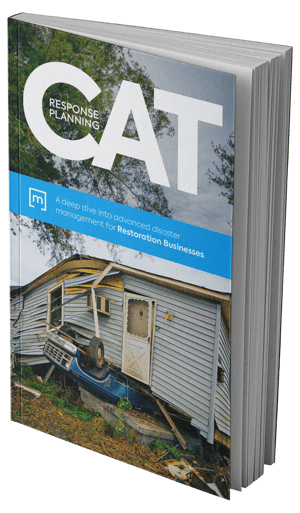CAT Response Planning 🏚️
In the midst of chaos, a dedicated catastrophic (CAT) response team can respond quickly to provide help and inspire hope. This comprehensive guide delves into the intricacies of that overall process and the pivotal role played by CAT restoration responders.

See what's inside
- 01 Disaster Scenarios
- 02 Contingency Plan
- 03 Workflow Efficiencies
- 04 Team Collaboration
- 05 Crisis Communication
Navigating Complex Disaster Scenarios
The act of responding to disaster scenarios is far from simple, and so understanding the scope and implications of this kind of work is very important. In this chapter we’ll delve into the varied types and magnitudes of disasters and explain their impact on restoration efforts.
Fine-Tuning Your Contingency Plan
An effective contingency plan is not a static document; it's a living, evolving blueprint that must be refined over time to reflect new understandings, experiences, and strategies. Find out how reflective analysis helps identify areas for improvement and how strategies that address these gaps should be integrated into the contingency plan.
Mastering Workflow Efficiencies
When the resulting disaster damage is extensive and more than a homeowner or business owner can handle, the situation requires quick attention. Your primary goal, of course, is to help that person deal with the devastation. That requires a lot of different processes – including data analysis and proper documentation.
Team Collaboration in Disaster Recovery: From Chaos to Normalcy
Transitioning from the response phase to recovery in a CAT job demands more than just a change in activities – it requires a transition from reactive management to proactive leadership. Learn how to shift your focus from immediate threats to long-term strategic planning, forecasting resources for ongoing tasks, and maintaining team morale in potentially drawn-out recovery operations.